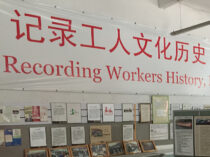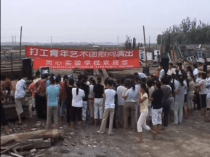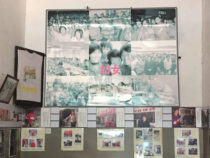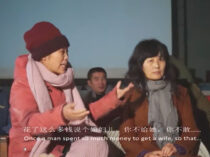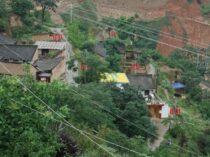Dialectical Ghosts
Dialectical GhostsShahram Khosravi There is no document of civilization which is not at the same time a document of barbarism. Walter Benjamin (1940) [1] I have two stories to tell you. I. In Summer 2019 I went to the Museum of Contemporary Art in Isfahan to listen to a panel discussion on the history of photography in Iran. The museum is next to the Chehel Soton Palace and it is one of the most beautiful buildings still remain from the Safavid era (1501-1736). During the break, I asked the staff about the building and was told that in the late nineteenth century it was the house of Zell-e Soltan (1850-1918), a prince of the Qajar dynasty and the governor of Isfahan. His name revived old memories and historical images started to appear before my eyes. The museum building was where my mother’s great grandfather was murdered; Hosseingholi Khan Ilkhani (1821-1882) was the paramount leader of the Bakhtiaris, a nomadic people who have been living along the Zagros mountains in Southwestern Iran. He was killed during the same period the lure of oil had begun to attract Europeans to the Bakhtiari land in the last decades of the 1800s. Since that day I have been haunted by the ghosts of my ancestor, of oil extractions, and of the Iranian contemporary art. This essay is about these ghosts who dialectically are related to each other and to the present. Weakening the Bakhtiaris was necessary to commence land grabbing and the wealth beneath it. As will be shown in the second part of the essay, it is not coincidental that the murder scene was turned into an art museum. Not long after the murder of Ilkhani, French geologists arrived, followed by British bankers. William Knox D’Arcy, backed by the British government, started to drill in the lands of Bakhtiari nomads, and in 1908 they reached oil in the western lands of the Bakhtiari region. The Bakhtiaris had for a long time been regarded as a ‘savage race’ not only by Europeans but also by the Iranian rulers. A savage race is a waste race. And so is their habitat. The Anglo-Persian Oil Company confiscated the ‘wastelands,’ and people as well as animals were displaced. Poor farmers and pastoralists were turned into low‐wage laborers. Pipelines were installed on their land to carry the black gold to the metropoles. Poor Bakhtiaris became providers of the funds for the modernization of Tehran in particular and the newborn nation-state in general, almost for free. The old pipelines are now debris that discloses the link between colonial rule and the current environmental disaster, between colonial accumulation by dispossession and the poverty and deprivation Bakhtiaris were and are struggling with. Part of every colonization project, in this case an internal one, is the voiding of space and time. It is the politics of invisiblization, that is the removal of hi/stories and traces. However, any form of domination meets resistance in one way or another. What do you do when the murder scene is cleaned up and it is turned into an art institution? You tell stories. Death and absences require stories. Bakhtiaris, like other oppressed minorities, have used storytelling to resist the imposed invisiblization. For Bakhtiari people, collective remembering has been a way to connect to their landscape. Their children grew up with stories and songs about the stolen lands, murdered ancestors, and resistance. Storytelling is an act of remembering. As Walter Benjamin puts it, remembering is not an act of preserving a time that has passed, but rather is a process of re-actualizing the past in the present and thereby linking past struggles to the ones in the here and now [2]. Storytelling refuses to let the ghosts disappear. Storytelling is a way of remembering injustices through repetition and replication. Storytelling is also a pedagogical practice that fosters connections across generations and transfers stories which are otherwise condemned to oblivion by the Tehran-centric national narrative. In the past decade, resistance against invisiblization has moved from mothers’ storytelling to memories digitized on Facebook walls, blogs, Instagram pages, and Telegram channels. The technologies offer new possibilities for visualizing lost stories. Old photos are scanned, copied, posted and reposted, moving from one social media platform to another. They have become public forms of a representational practice that a new collective imagination has been built upon. The digital storytelling indicates the young generations’ desire to make their historical agency visible. Storytelling brings isolated experiences together and transforms them into a collective and historical experience. The online storytelling engenders historical imaginaries. Imagination is a social practice and a constitutive feature of modern subjectivity. A collectively shared imagination can actuate actions such as political movements. Now and then online storytelling entwines with offline practices, such as the invention of new rituals or sporadic political uprisings. A most recent example is from July 2021, when people in small cities of the Western part of Bakhtiari land protested against water crisis and poverty. A composite of new images and photos of old heroes, such as Alimardan Khan (executed by Reza Shah Pahlavi in 1934) juxtaposed with slogans about stolen oil, could be seen everywhere online as well as offline. Old wounds of state brutality are re-opened in the present. One recurrent slogan during the protests was: The only thing we have received from the oil is walking on pipelines. Some of those who grew up walking on pipelines became good storytellers, such as Amin Roshan and Hamzeh Farhadi, two young artists from Bakhtiari. Both born in the early 1980s, they grew up with parents and grandparents who worked for the oil company. While in Tehran the extraction of oil is merely political and a matter of business, in Bakhtiari it is part of people’s lived experience. For these young artists, oil has been a significant part of their daily life. Oil is emotional and personal. Life itself has been impregnated with oil. Working with oil and about oil is just a continuation of their childhood plays on pipelines. The gloomy sky in Farhadi’s paintings leaves no escape from despair. Sometimes it feels that the sky catches fire. Fire is unavoidable in the region. Natural gas from the oil wells has been burning since he was born. High raging flames at oil extraction sites can be seen from everywhere. In a series of sculptures, he turns pipelines into domestic interior decoration. Sculptural table lamps which do not illuminate are testimonies of the failed promises of the oil; it cannot bring light into life. Roshan is more explicit in showing the impact of oil on the Bakhtiaris’ past forms of life. In some of his works, Roshan uses vintage blueprints from the oil company as the backdrop for his art works. In others, he uses diluted crude oil on canvas or old photographs of nomadic Bakhtiaris. Roshan’s and Farhadi’s works are visual depictions of the eco-apocalypse Bakhtiaris are struggling with today. They exhibit vandalized forms of life, failed promises of modernization, and a stolen future. In the works by Roshan and Farhadi and in the common political imaginaries of Bakhtiaris, another icon which frequently appears alongside oil pipelines is the Lion tombstone. The second story starts here. 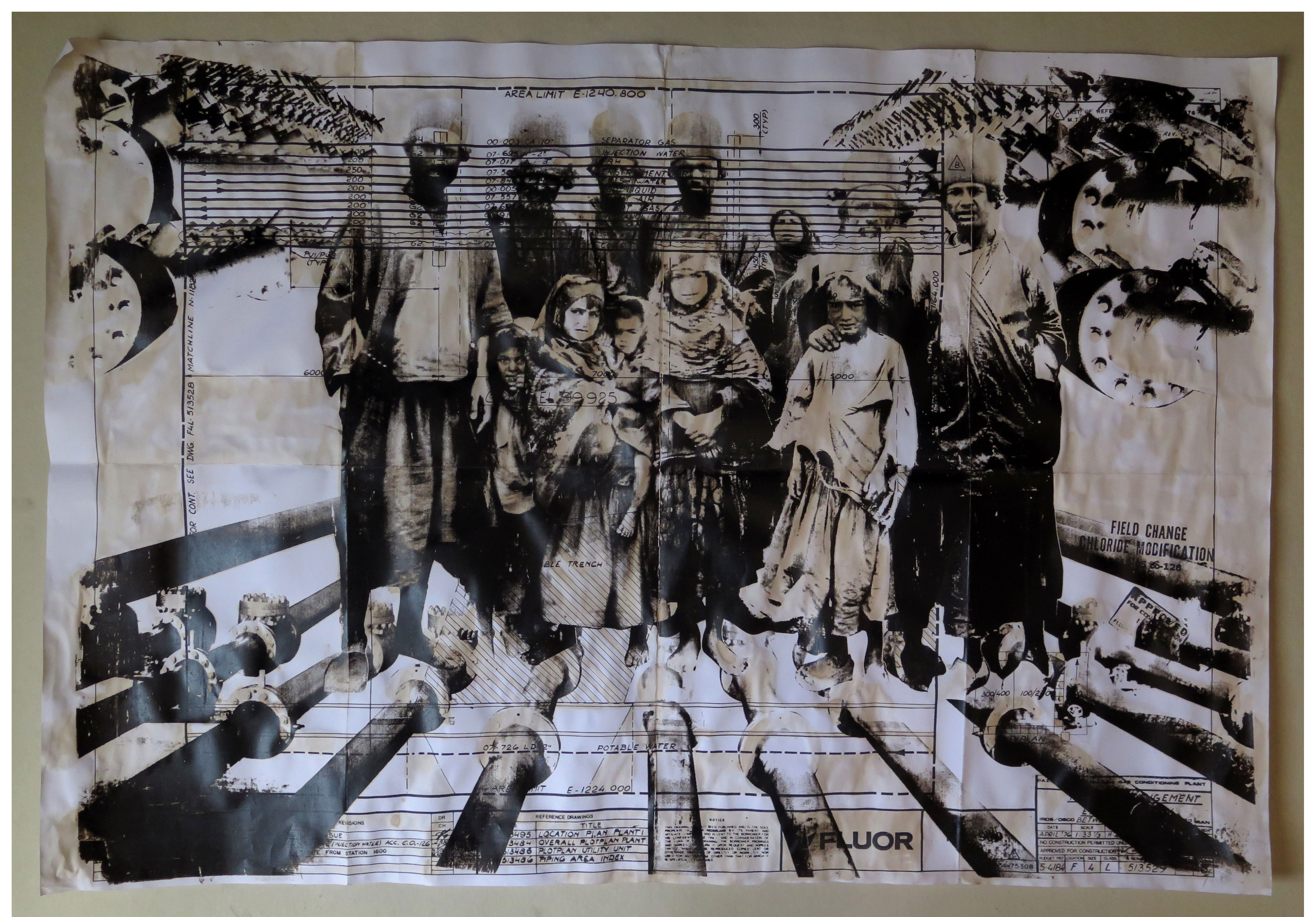 1. Amin Roshan (Ancestors/silk screen with crude oil on plan/50-70/2010)  2. Amin Roshan (My father’s contraction/silk screen with crude oil on plan/50-70/2010)  Hamzeh Farhadi (Can I go forward when my heart is here, 2015)  Hamzeh Farhadi (Can I go forward when my heart is here, 2015)  Mitra Soltani, photo of bard shi II. On an August afternoon in 2016, a friend took me to meet Parviz Tanavoli, an internationally celebrated Iranian artist. In a large luxury house located in a wealthy neighborhood in north Tehran, the artist received us. While entering the house from the gate which opened to the garden, the first things which caught my eyes were two Bard shirs, literally stone lion. As an ancient tradition among the Bakhtiairs, Bard shir is a tombstone formed in the shape of a lion and is placed on the graves of courageous people who were of significance for their community. It is a sacred symbol and by placing it on graves they honor the dead and celebrate the greatness and achievements of the dead. In the rich and famous Tehrani artist’s garden, two Bard shirs were placed next to the swimming pool. When I asked how they ended up in his house, Tanavoli proudly said that he had bought them. He is also known for being a collector of artefacts from all over the country and he articulated his interest in collecting in terms of caring: ‘I have saved the last residue of tribal art.’ In interviews and publications in English, Tanavoli often uses the colonial terminologies ‘tribe’ and ‘collection.’ The term ‘tribe’ is rooted in a racial ideology which hierarchizes different communities according to a social evolutionist typology. In addition, the mentality of collecting is a colonial mentality. This mentality is built on a pathological self–righteousness to engage in a patronizing mission of taking artifacts from those they originally belong to. This has of course a long history. European museums are crammed with stolen artifacts and objects from former colonized countries. Staged as a ‘saving’ project by the middle-class Tehranis, what is pushed into the shadow is the harm that is caused for the people who are deprived of their artifacts. The act of ‘collecting’ which is essentially the removal of material culture from its historical context is an act of dispossession. Removing Bard shir from the local hi/stories unsettles the link between the past and the present, between bodies and landscape, between the living and the dead. By displacing Bard shirs from cemeteries in the Bakhtiari land to his house in Tehran, the collector writes his own narrative of ownership over them. I asked Tanavoli what he wanted to do with them but he did not answer. However, a couple of years later he made a financially successful art project featuring the figure of the lion. Rather than anything else, it is an appropriation of a marginalized group’s artefacts without their consent or permission. Tanavoli claimed that the ‘art life of Bard shirs starts after they have lost their function.’ But who can claim when something’s function ends? And for whom? The artist/collector felt entitled to take away two Bard shirs because the Bakhtiari land has been characterized by the Tehran-centric narrative as an empty land. In a supposedly uninhabited land, the artifacts, as the artist put it, ‘lose their function.’ It is exactly the same assumption the oil chasers had when unearthing Bakhtiari’s subterranean natural resources. III. The murder of the Ilkhani at the site of the later Isfahan Museum of Contemporary Art in 1882 and the removal of the Bard shirs are both part of the same colonizing project. Stealing cultural materials is not unrelated to the dispossession of land. While the colonial oil corporations unsettled Bakhtiari people and turned their pasture into wastelands to unearth the wealth underneath, the colonial mentality of national museums and Tehran-based artists/collectors turn Bakhtiari culture into a ‘functionless’ culture to extract their artifacts easily and cheaply in the name of ‘saving’ and ‘caring.’ When put in its historical context, meaning all the harms caused to the Bakhtiari environment and people, the violence embedded in Tanavoli’s cultural appropriation becomes more tangible. The two stories about murder and stealing reveal a concealed relationship between state violence, dispossession of land, and the emergence of new forms of art institutions as well as the growth of private collections. The wealth of oil financed the establishment of the Tehran Museum of Contemporary Art in the 1970s, a forerunner for its filial in Isfahan. The National Iranian Oil Company provided funds for its collections of national and international items. Tanavoli was a key figure in the development of the museum. Interestingly, a permanent feature of the museum is a work by the Japanese artist Noriyuki Haraguchi. Called Matter & Mind, it is a large black reflecting pool of oil. After the panelists’ presentations at the Museum of Contemporary Art in Isfahan and when it was time for questions, I could not help asking if anyone knew about the murder in the building we were in. None, including the staff of the museum, knew anything about it. They showed no curiosity either. Similarly, when I bring up the ethical dilemmas and political implications of the removal of Bard shirs by the celebrated artist, I meet skepticism and even antagonism from some urban artists and curators. Surely, why would they be concerned? They are not haunted by ghosts. Ghosts are an issue only for minorities anyway. The ghosts of my murdered ancestor and of the Bard Shirs have been haunting me. These two stories are told as an attempt to seize the fleeing images of the past in a moment when intimate memories are interwoven with public remembrance. These images are dialectically related to each other and actualize hidden historical moments to unsettle and shock [3]. Similarly, the fleeing ghosts from a haunted past are dialectical ghosts who link mothers’ storytelling to political protests and online visual activism. As a people at the margin, we need to admit the ghost into our analyses of social and political life. When space is emptied and time is drained, these haunting ghosts are the only hope left. Because the ghosts cannot be killed by the states, stolen by artists, or abducted by museums. We need to call upon them as witnesses to visualize and verbalize what has been unseen and unspoken in the official archives, histories, and narratives [4]. This act of re-calling the ghosts and waking the dead make whole what has been smashed. Acknowledgments: I would like to thank Behzad Khosravi-Noori, Pouria Jahanshad, Alessandro Petti, Wei Wu, and Saba Zavarei for their comments on early drafts. Shahram Khosravi is a former taxi driver and currently an accidental Professor of Anthropology at Stockholm University. Notes [1] ‘Theses on the Philosophy of History’ in Walter Benjamin: Selected Writings, 4: 1938–1940, Cambridge, MA: Harvard University Press, 2006. [2] ‘Theses on the Philosophy of History’ in Walter Benjamin: Selected Writings, 4: 1938–1940, Cambridge, MA: Harvard University Press, 2006. [3] Walter Benjamin, The Arcades Project, Cambridge, MA. & London: Belknap Press, 1999. [4] I am inspired by Avery Gordon’s Ghostly matters: haunting and the sociological imagination, published by University of Minnesota Press, 2008. |



